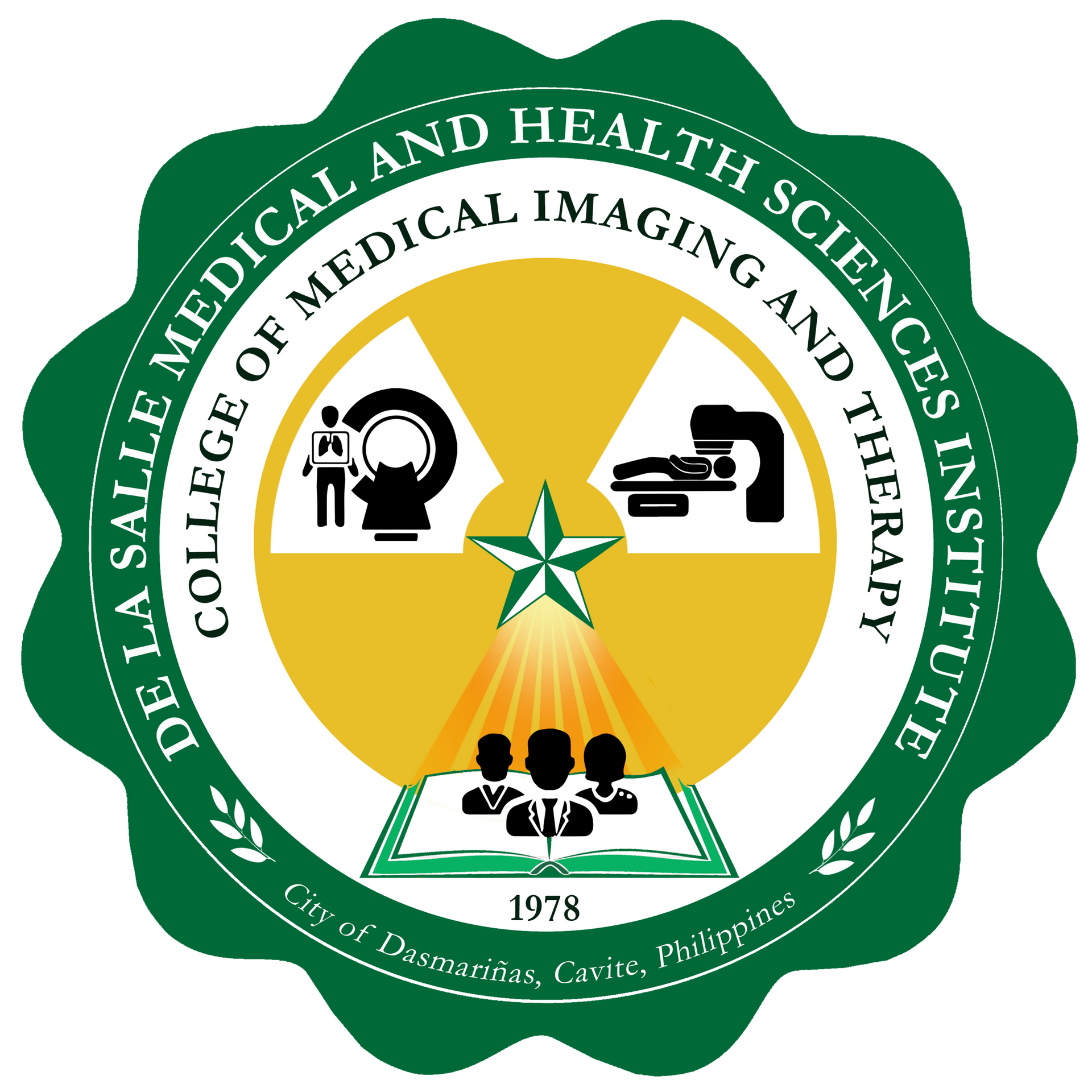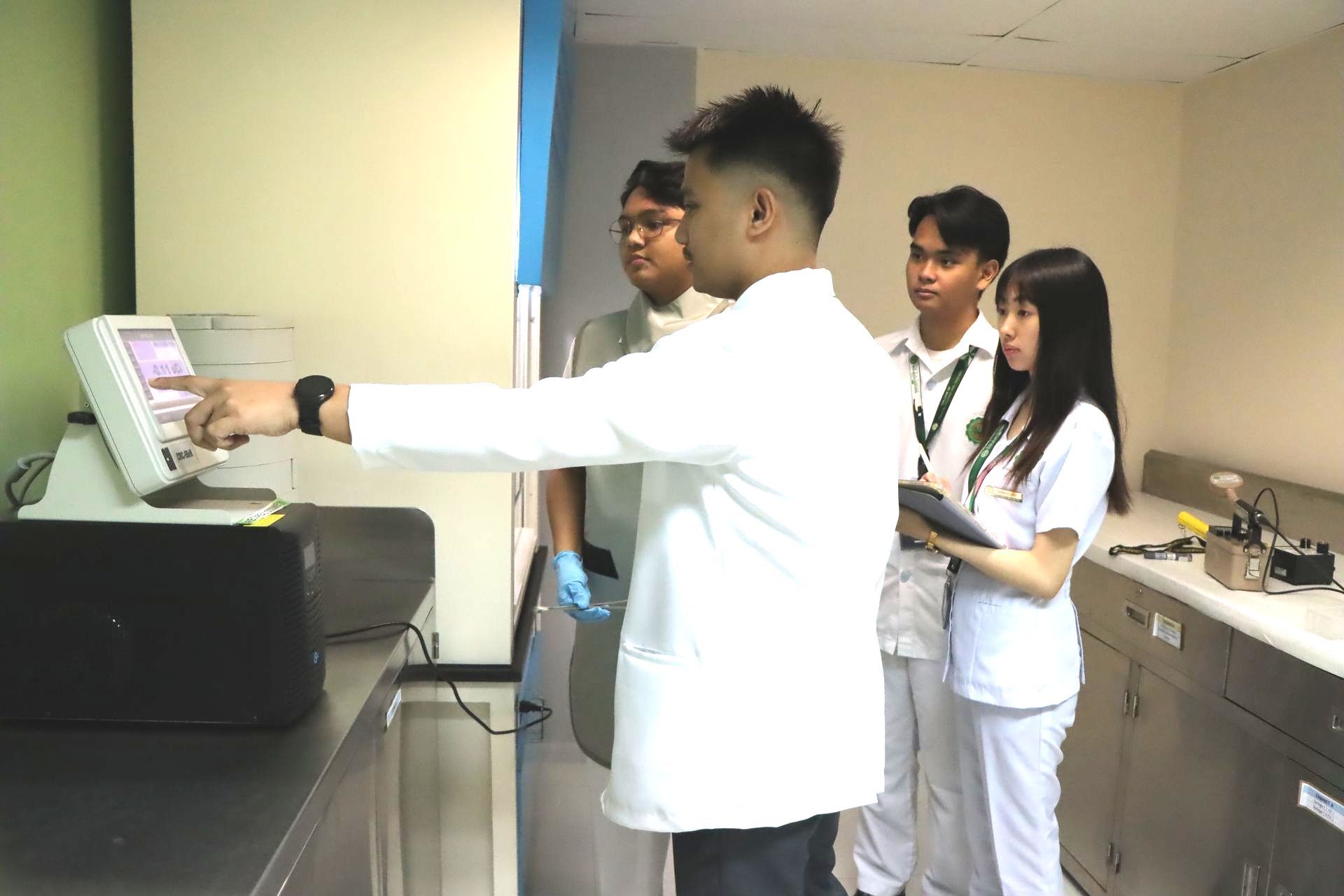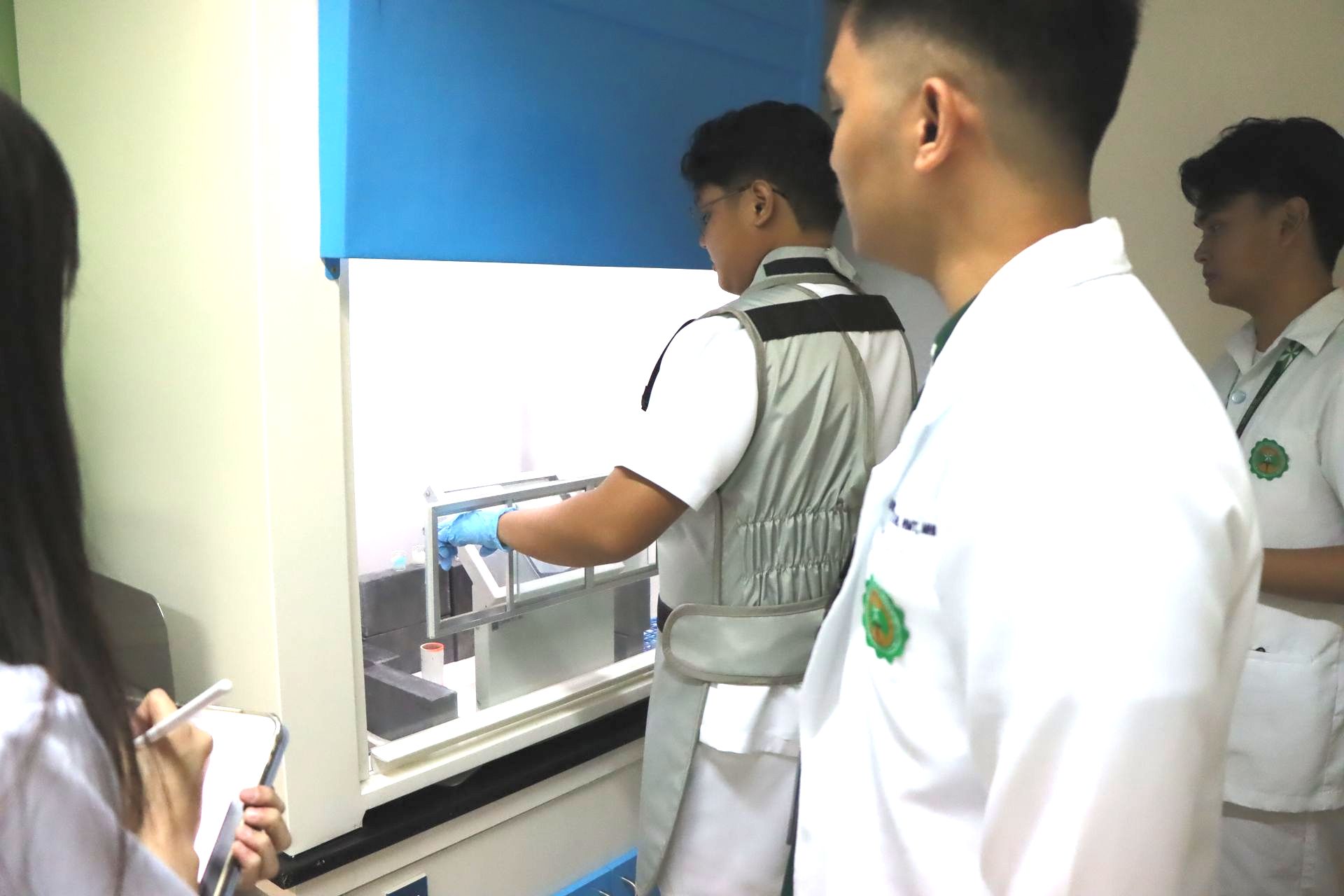

College of Medical Imaging and Therapy
Established in 1978 as the College of Radiologic Technology at Emilio Aguinaldo College, the College initially offered the Associate in Radiologic Technology (ART) program, training students as X-ray Technologists. Ownership transferred to the De La Salle Brothers in 1987, and the Bachelor of Science in Radiologic Technology (BSRT) was introduced in 1989. The program saw continued success, with graduates excelling in licensure examinations.
In 2000, administration moved to DLSMHSI, prompting a name change to the College of Medical Radiation Technology. The college has since flourished, boasting a state-of-the-art laboratory and earning recognition from the Professional Regulation Commission as the Top 1 Performing School for Radiologic Technology in the Philippines. Renamed the College of Medical Imaging and Therapy in 2018, it offers programs in BS Radiologic Technology and BS Nuclear Medicine Technology, emphasizing accurate and safe radiation utilization in both imaging and therapy.
Medical Center
Nurturing Your Health
Academics
Nurturing Potentials
Research
Nurturing Discoveries
Lasallian Mission
Living the Mission
Medical Center
Nurturing Your Health
Academics
Nurturing Potentials
Research
Nurturing Discoveries
Lasallian Mission
Living the Mission
Medical Center
Nurturing Your Health
Academics
Nurturing Potentials
Research
Nurturing Discoveries
Lasallian Mission
Living the Mission
Nurturing Your Health
Academics
Nurturing Potentials
Research
Nurturing Discoveries
Lasallian Mission
Living the Mission
Medical Center
Nurturing Your Health
Academics
Nurturing Potentials
Research
Nurturing Discoveries
Lasallian Mission
Living the Mission
ABOUT US


Objectives
The College of Medical Imaging and Therapy aims to:
- Live out the Lasallian values;
- Provide a program for safe and accurate utilization of radiation both in medical imaging and therapy;
- Develop competencies using innovative teaching-learning strategies and state-of-the-art laboratory facilities;
- Promote scholarly research as a means for lifelong learning and innovation;
- Provide opportunities to promote social, cultural, and moral responsibility through community services;
- Develop faculty members through continuing professional development;
- Enhance the curriculum in conformity with ASEAN and global standards.
Description of Logo
-
GREEN
The logo is dominantly GREEN, which is the Lasallian color in the Philippines.
As the color of life, it also symbolizes that the College espouses Lasallians – its faculty, students and other stakeholders – as Nurturers of Life.
-
YELLOW
The center of the logo uses the color YELLOW (used in the ionizing radiation symbol) that symbolizes the field of radiologic sciences.
-
TREFOIL-LIKE SYMBOL FOR IONIZING RADIATION
In the center can be found a TREFOIL-LIKE SYMBOL FOR IONIZING RADIATION representing the different programs that the College is offering and also its mission. The left blade depicts a symbol for imaging and the right blade depicts a symbol for therapy
The lower part completes the lower blade of the trefoil symbol, which also symbolizes the College’s mission of offering quality Lasallian education guided by the values of St. John Baptist de La Salle..
-
THE OPEN BOOK
The OPEN BOOK, where the College’s stakeholders are standing, symbolizes the knowledge, which is the foundation of the College’s mission to become the premium choice for radiologic sciences education.
-
LASALLIAN STAR
This mission is guided by the values of Spirit of Faith, Communion in Mission, Zeal for Service and Reverence for life and is symbolized by the LASALLIAN STAR providing the guiding light for the College’s mission.
Objectives
At the end of the program, the graduates of Bachelor of Science in Medical Laboratory Science shall have:
- developed the knowledge, skills, and professional attitude in the performance of clinical laboratory procedures needed to help the physician in the proper diagnosis, treatment, prognosis and prevention of diseases;
- developed critical thinking skills in Medical Technology/Medical Laboratory Science;
- appreciated the need for research and community-related activities;
- participated in activities related to promoting the profession and actively engages in lifelong learning activities; and
- developed collaborative and leadership qualities.
Description of Logo
-
GREEN
The logo is dominantly GREEN, which is the Lasallian color in the Philippines. As the color of life, it also symbolizes that the College espouses Lasallians – its faculty, students and other stakeholders – as Nurturers of Life.
-
YELLOW
The center of the logo uses the color YELLOW (used in the ionizing radiation symbol) that symbolizes the field of radiologic sciences.
-
REFOIL-LIKE SYMBOL FOR IONIZING RADIATION
In the center can be found a TREFOIL-LIKE SYMBOL FOR IONIZING RADIATION representing the different programs that the College is offering and also its mission. The left blade depicts a symbol for imaging and the right blade depicts a symbol for therapy
The lower part completes the lower blade of the trefoil symbol, which also symbolizes the College’s mission of offering quality Lasallian education guided by the values of St. John Baptist de La Salle..
-
THE OPEN BOOK
The OPEN BOOK, where the College’s stakeholders are standing, symbolizes the knowledge, which is the foundation of the College’s mission to become the premium choice for radiologic sciences education.
-
LASALLIAN STAR
This mission is guided by the values of Spirit of Faith, Communion in Mission, Zeal for Service and Reverence for life and is symbolized by the LASALLIAN STAR providing the guiding light for the College’s mission.
ProgramS OFFERED
Bachelor of Science in Radiologic Technology
The Bachelor of Science in Radiologic Technology program is designed to train students in the application of radiation and other energy for imaging, diagnosis and therapy in medicine. The curriculum prepares the students to have the requisite knowledge, skills and values needed to perform a variety of procedures for the different diagnostics and therapeutic applications of radiation.
Core Subjects
- Human Anatomy and Physiology
- Medical Terminology
- Introduction to Research
- Research Writing 1
- Research Writing 2
- Statistics
- Inter-professional Education
Career Opportunities
- Research
- Academe
- Forensics
- Medical Physics
Bachelor of Science in Nuclear Medicine Technology
The
Bachelor of Science in Nuclear Medicine Technology program is a pioneering four-year degree program in the Philippines and Asia that envisions training students in the utilization of radioactive pharmaceuticals to provide diagnostics, therapeutic, and research applications in the field of medicine. Nuclear medicine technologists work closely with physicians, radiologists, and other health professionals and use highly specialized imaging equipment to generate images that can be used to visualize pathologic conditions and observe the physiology of different organs. The curriculum also prepares future nuclear medicine technologists for preparations and administration of radiopharmaceuticals, radiation safety, quality assurance, and quality control closely with physicians, radiologists, and other health professionals.
Core Subjects
- Human Anatomy and Physiology
- Medical Terminology
- Immunology and Serology
- Biochemistry
- Imaging Science and Informatics
- Introduction to Research
- Research Writing 1
- Research Writing 2
Career Opportunities
- Medicine
- Research
- Academe
- Forensics
- Medical Physics
Administrators
COLLEGE OF MEDICAL IMAGING AND THERAPY
SY 2025 - 2026
| POSITION | NAME |
|---|---|
| Dean | Dan Clarence A. Diaz, RRT, MHPEd |
| Vice Dean | Sarah Mae B. Zaragoza, RRT, MPH |
| Chair for Research and Development | Mezie Laurence B. Ortiz, RRT, MAEd, MSc |
| Program Director, Department of Nuclear Medicine Technology | Alfred Benedict A. Bayan, RMT, MHM |
| Concurrent Chair, Pre-Clinical Education, Department of Nuclear Medicine Technology | Alfred Benedict A. Bayan, RMT, MHM |
| Chair, Clinical Education, Department of Nuclear Medicine Technology | Aya Cassandra O. Chua, RRT |
| Program Director, Department of Radiologic Technology | Lowela M. Alindayu, RRT, MAEd |
| Chair, Pre-Clinical Education, Department of Radiologic Technology | Nestor Jonathan E. Gatchalian, RRT, EdD |
| Concurrent Chair, Clinical Education, Department of Radiologic Technology | Sarah Mae B. Zaragoza, RRT, MPH |
| Vice Chair, Clinical Education, Department of Radiologic Technology | Stella Marie F. Austria, RRT |
related links
related links
Contact Us
COLLEGE OF MEDICAL IMAGING AND THERAPY
2nd Floor, Wang Building
De La Salle Medical and Health Sciences Institute
CLIENT FEEDBACK

Scan the QR Code or click here
CLIENT FEEDBACK

Scan the QR Code or click here
PHONE
ADDRESS
Governor D. Mangubat Avenue, Zone IV,
City of Dasmariñas, Cavite, Philippines
Trunklines:
+63 (2) 8988-3100 (Manila)
or +63 (46) 481-8000 (Cavite)
Local no.:
1471
For general inquiries: cmrtinquiries@dlsmhsi.edu.ph
For document requests: cmrtcredentials@dlsmhsi.edu.ph
For seminars: cmrtseminars@dlsmhsi.edu.ph
CLIENT FEEDBACK

Scan the QR Code or click here
CLIENT FEEDBACK

Scan the QR Code or click here
ADDRESS
Governor D. Mangubat Avenue, Zone IV,
City of Dasmariñas, Cavite, Philippines
PHONE
Trunklines:
+63 (2) 8988-3100
(Manila)
or
+63 (46) 481-8000
(Cavite)
Local no.:
1471
For general inquiries: cmrtinquiries@dlsmhsi.edu.ph
For document requests: cmrtcredentials@dlsmhsi.edu.ph
For seminars: cmrtseminars@dlsmhsi.edu.ph

